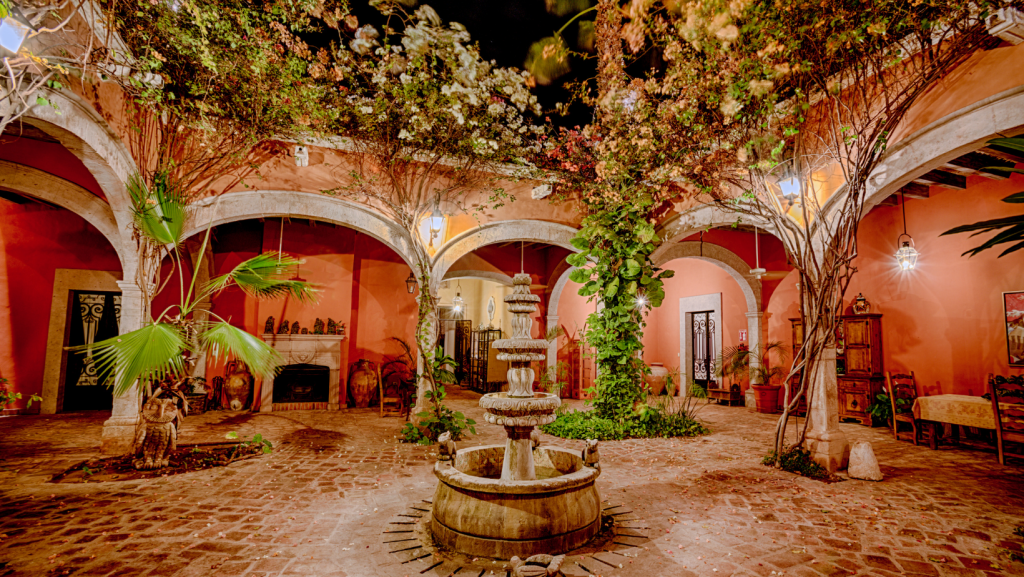From Ancient Retreats to Modern Havens: The Evolution of Today’s Courtyard Gardens
The humble courtyard garden, a timeless concept, has seen a magnificent resurgence in contemporary design. Far from being mere forgotten pockets, today’s courtyards are dynamic, multi-functional spaces that serve as vital extensions of our homes and workplaces. But how did these intimate green sanctuaries evolve, and what principles guide their creation in the modern world?
Echoes of the Past: A Brief History of Courtyard Influence
The idea of an enclosed garden space is deeply rooted in history, born out of necessity and a desire for beauty.
- Ancient Civilizations: Think of Mesopotamia and Egypt, where courtyards offered privacy, security, and a respite from harsh climates. They were essential for light, ventilation, and even as a source of food and water.
- Roman Peristyles: The Romans refined this concept with their elegant peristylium gardens – open, colonnaded courtyards that seamlessly integrated indoor and outdoor living, showcasing wealth and providing a serene escape.
- Moorish & Islamic Gardens: These traditions further elevated the courtyard, making water features central to their designs – not just for aesthetics but also for cooling and symbolic purposes. Geometric patterns, fragrant plants, and intricate tilework were hallmarks.
- Medieval & Renaissance Europe: Courtyards in castles and monasteries provided practical spaces for herbs, vegetables, and quiet contemplation, while Renaissance gardens saw a re-emphasis on classical symmetry and architectural integration.
These historical influences, whether consciously or subconsciously, continue to shape how we envision and design courtyard gardens today. The desire for privacy, connection to nature, and the creation of a calm oasis remains as strong as ever.
The Modern Courtyard: Design for Living
Today’s courtyard gardens are incredibly diverse, adapting to myriad architectural styles and personal tastes. They are typically defined by:
- Intimacy and Enclosure: The very essence of a courtyard is its enclosed nature, providing a sense of seclusion and protection from the outside world. This can be achieved through surrounding buildings, high walls, fencing, or even dense planting.
- Connection to Interiors: A hallmark of modern courtyards is their strong visual and often physical link to adjacent indoor spaces, blurring the lines between inside and out. Large bifold doors, expansive windows, and consistent flooring materials extend the living area.
- Multi-Functionality: Contemporary courtyards are often designed for diverse activities – from outdoor dining and entertaining to quiet contemplation, reading nooks, or even an outdoor office space.
Key Elements of Contemporary Courtyard Garden Design:
1. Thoughtful Planting:
Given the often-limited space and specific microclimates of courtyards, plant selection is crucial.
- Vertical Greenery: Maximising vertical space is paramount. Living walls, wall-mounted planters, and climbing plants on trellises or pergolas transform blank walls into lush backdrops. Fragrant climbers like jasmine or climbing roses add sensory delight.
- Layering and Texture: Instead of cramming in too many species, modern courtyards often focus on a limited palette of plants chosen for their varied textures, foliage colour, and form. Architectural plants like ferns, hostas, or ornamental grasses create year-round interest.
- Container Planting: Pots and planters are essential, offering flexibility and allowing for seasonal changes. Grouping different-sized containers creates visual depth. Drought-tolerant plants and evergreens are popular choices for low maintenance.
- Microclimates: Understanding the unique light and shade patterns within a courtyard is key. Sunny courtyards might favour Mediterranean plants, while shaded ones will thrive with woodland species.
2. The Allure of Water:
Water features, echoing ancient traditions, are central to many contemporary courtyard designs.
- Sound and Serenity: The gentle burble of water creates a soothing ambiance, masking urban noise and promoting relaxation.
- Visual Interest: From sleek, minimalist rills to bubbling spheres, wall-mounted cascades, or reflective ponds, water features add dynamic visual appeal and act as focal points.
- Wildlife Attraction: Even a small water feature can attract birds and beneficial insects, enhancing biodiversity.
- Cooling Effect: In warmer climates, evaporating water can help to slightly cool the air within the enclosed space.
3. Hardscaping and Materials:
The choice of paving, decking, and wall finishes significantly impacts the overall feel.
- Continuity: Using similar materials to adjacent indoor flooring helps to extend the sense of space.
- Defined Zones: Different paving materials or changes in level can subtly define areas for dining, lounging, or display.
- Sustainable Choices: Recycled materials like reclaimed stone, permeable paving to manage stormwater, and ethically sourced timber are increasingly popular, aligning with eco-conscious design principles.
- Reflective Surfaces: Mirrors strategically placed can visually expand a small courtyard and bounce light into darker corners.

4. Lighting and Atmosphere:
Effective lighting transforms a courtyard into a magical space after dark.
- Ambient Lighting: Soft, indirect lighting from uplighters or festoon lights creates a warm, inviting glow.
- Feature Lighting: Spotlights can highlight key plants, architectural elements, or water features.
- Functionality: Task lighting for dining or reading areas ensures usability.
- Smart Lighting: Solar-powered options and automated systems offer energy efficiency and convenience.
The Courtyard as a Sustainable Sanctuary
Beyond aesthetics, today’s courtyard gardens often embrace sustainable practices. This includes:
- Rainwater Harvesting: Collecting rainwater for irrigation reduces reliance on mains water.
- Drought-Tolerant Planting: Selecting plants that thrive with minimal watering.
- Composting: Recycling garden waste to create nutrient-rich soil amendments.
- Encouraging Biodiversity: Choosing plants that attract pollinators and other beneficial wildlife.
From their ancient utilitarian roots to their contemporary role as sophisticated outdoor rooms, courtyard gardens continue to captivate and inspire. They offer a powerful antidote to urban density, providing a slice of nature, a breath of fresh air, and a tranquil retreat, proving that even the smallest space can hold immense beauty and purpose.